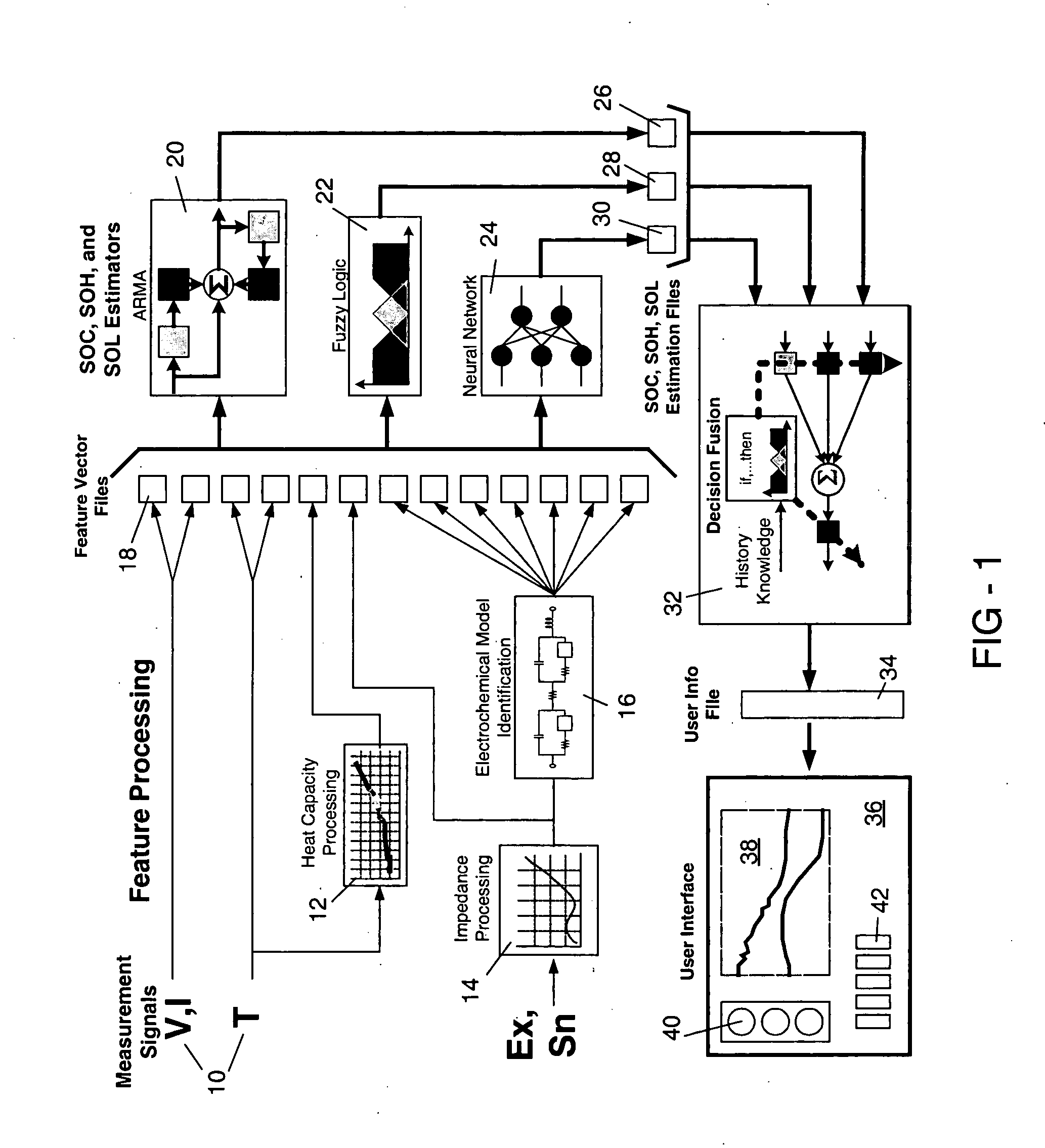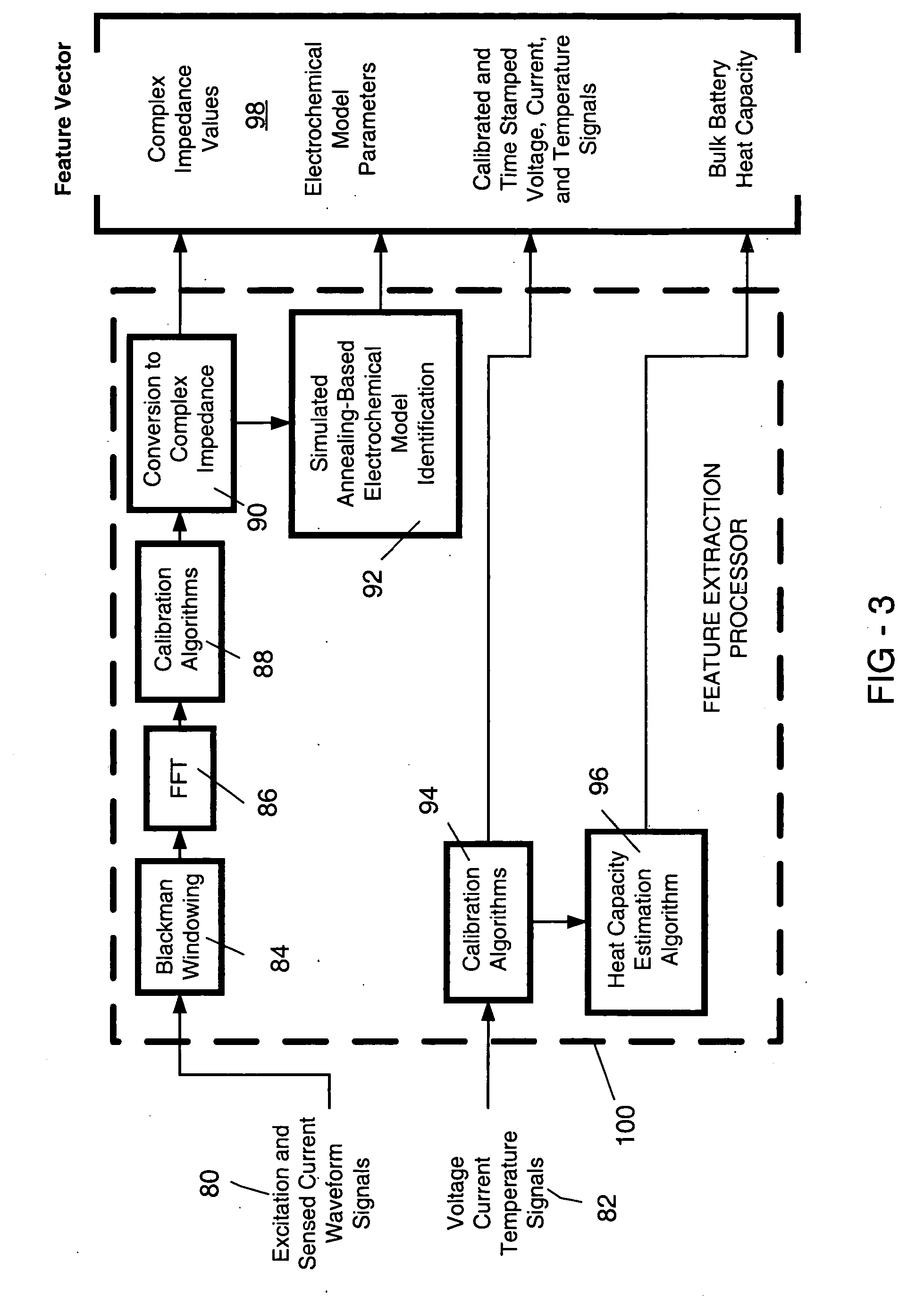Model-based predictive diagnostic tool for primary and secondary batteries
- Summary
- Abstract
- Description
- Claims
- Application Information
AI Technical Summary
Benefits of technology
Problems solved by technology
Method used
Image
Examples
Embodiment Construction
[0033]FIG. 1 shows a schematic of a predictive diagnostic system according to an embodiment of the present invention. For convenience, the following example will be discussed in relation to battery diagnosis, though a similar approach may be taken towards determining the condition of fuel cells, other electrochemical cells, and other systems providing condition-related data. A brief description of the system operation is provided below, with more detailed descriptions following. Measurement signals are received by the diagnostic system, for example as shown at 10. Measurement signals include electrical parameters such as battery voltage (V) and current (I), temperature (T), and an electrical signal (Sn) generated in response to an electrical excitation (Ex) of the battery. Impedance processing 14 is used to determine battery impedance data as a function of excitation frequency. The impedance data is then fitted by an electrochemical model 16, so as to provide electrochemical paramet...
PUM
 Login to View More
Login to View More Abstract
Description
Claims
Application Information
 Login to View More
Login to View More - R&D
- Intellectual Property
- Life Sciences
- Materials
- Tech Scout
- Unparalleled Data Quality
- Higher Quality Content
- 60% Fewer Hallucinations
Browse by: Latest US Patents, China's latest patents, Technical Efficacy Thesaurus, Application Domain, Technology Topic, Popular Technical Reports.
© 2025 PatSnap. All rights reserved.Legal|Privacy policy|Modern Slavery Act Transparency Statement|Sitemap|About US| Contact US: help@patsnap.com



